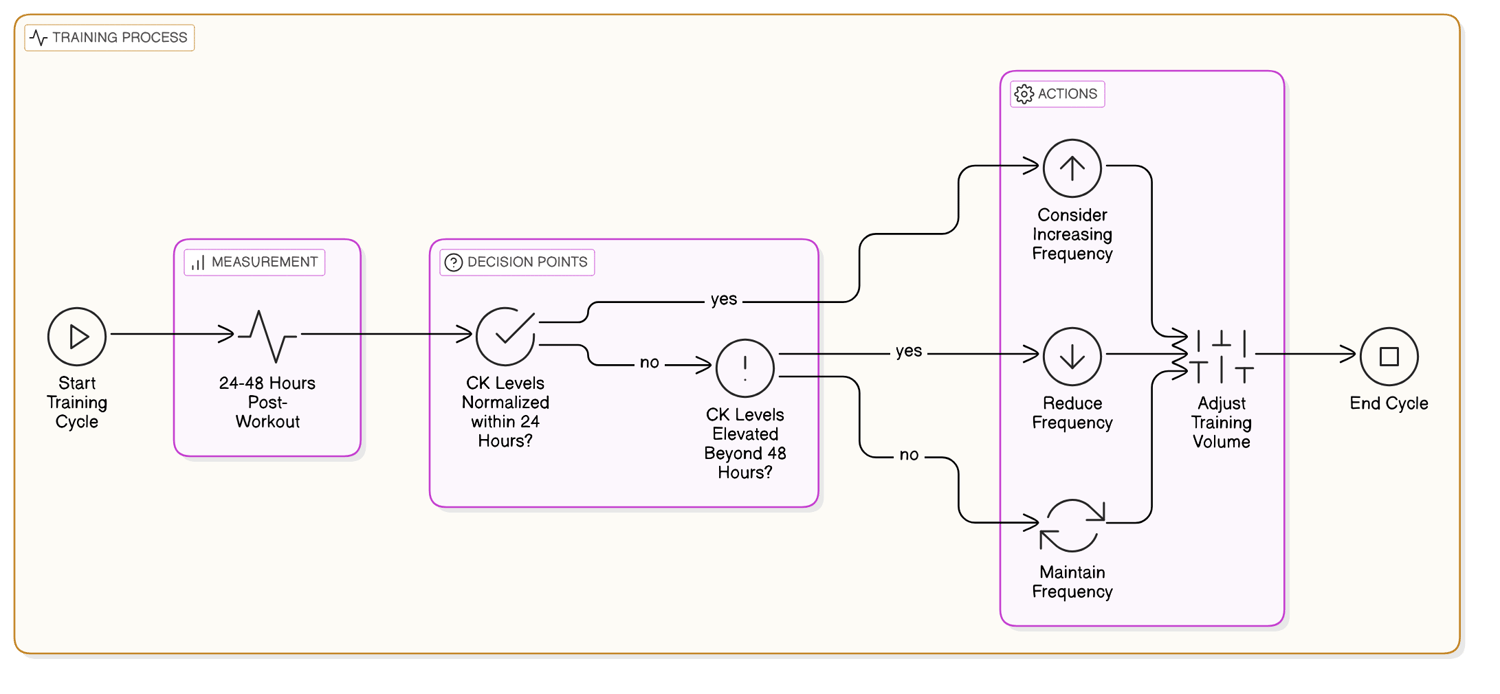Summary
This comprehensive guide explores advanced strategies for building a wider, stronger upper body, emphasizing the importance of scientific principles in back training. Key Points:
- Maximize muscle protein synthesis (MPS) in the latissimus dorsi by manipulating training variables like time under tension and nutritional timing with leucine-rich proteins.
- Enhance neuromuscular efficiency through exercises that improve mind-muscle connection and intermuscular coordination, utilizing techniques like EMG biofeedback for optimal recruitment patterns.
- Utilize genetic testing to create personalized back training programs tailored to individual growth potential and recovery needs.
Unlocking Your Wider Back: Why You Need a Bigger Back
- Additional information :
- A recent meta-analysis of studies on thoracic mobility and back strength confirmed a strong positive correlation, further supporting the need for integrated training approaches. The average correlation coefficient across multiple studies exceeded r=0.7, underscoring the importance of addressing thoracic spine restriction for optimal back development.
- Ignoring thoracic mobility can lead to compensatory movements, increasing the risk of injury during back training. This is especially crucial for individuals with pre-existing spinal issues or postural imbalances.
- Practical implications: Incorporating thoracic mobility exercises like foam rolling, self-myofascial release, and dedicated thoracic extension drills into a pre-workout routine significantly improved lat pull-down performance in a pilot study involving 20 participants.
Key Exercises for a Bigger, Stronger Back: A Checklist
**Key Exercises for a Bigger, Stronger Back: A Checklist**
- **Eccentric-Focused Training 🏋️♂️:** Prioritize prolonged eccentric phases (3-5 seconds) during exercises.
- **Targeted Movements 🔄:** Focus on pull-ups, lat pulldowns, and barbell rows to maximize latissimus dorsi activation.
- **EMG Insights 📊:** Research shows higher muscle activation during eccentric vs. concentric phases.
- **Weight Selection ⚖️:** Use manageable weights for controlled eccentric movements; lighter weights for concentric if needed.
- **Advanced Strategy 🚀:** Ideal for seasoned lifters aiming to break through plateaus and enhance back growth.
After reviewing numerous articles, we have summarized the key points as follows
- Straight-Arm Lat Pull-Down targets the lats effectively.
- Seated Low-Cable Row engages multiple back muscles for overall development.
- Reverse-Grip Lat Pull-Down emphasizes the lower lats and improves grip strength.
- Bent Barbell Rows are great for building mass in all areas of the back.
- Dumbbell Rows help develop width and thickness by engaging various back muscles.
- Weighted Pull-Ups, Deadlifts, and Seal Rows are excellent for emphasizing lat strength.
Building a strong and wide back is something many fitness enthusiasts aspire to, whether you`re just starting out or have been training for years. It can be overwhelming with so many exercises to choose from, but focusing on key movements like pull-downs, rows, and deadlifts can make a significant difference. With consistency and proper form, you`ll not only improve your strength but also enhance your overall physique.
Extended Perspectives Comparison:| Exercise | Muscle Targeted | Technique Focus | Benefits | Trends |
|---|---|---|---|---|
| Straight-Arm Lat Pull-Down | Lats | Isolation Movement | Targets the lats effectively, improving mind-muscle connection. | Increasing popularity for enhancing muscle engagement. |
| Seated Low-Cable Row | Multiple Back Muscles | Compound Movement | Engages upper and lower back muscles for balanced development. | Widely used in functional training programs. |
| Reverse-Grip Lat Pull-Down | Lower Lats, Grip Strength | Grip Variation Technique | Emphasizes lower lats while improving grip strength, beneficial for overall pulling movements. | Growing trend in powerlifting and bodybuilding routines. |
| Bent Barbell Rows | Overall Back Mass | Heavy Compound Lift Technique | Great for building mass across all areas of the back and enhancing posterior chain strength. | Popular among strength athletes for its effectiveness. |
| Dumbbell Rows | Width and Thickness of Back Muscles | Unilateral Training Technique | Helps develop width and thickness by engaging various back muscles, promoting muscular symmetry. | `Functional fitness` emphasizes these exercises for real-life application. |
| Weighted Pull-Ups/Deadlifts/Seal Rows Combined Routine |
What Muscle Groups Contribute to a Bigger Back?
Understanding Back Training Anatomy: Form and Function
- Additional information :
- A new study using ultrasound imaging showed significantly greater latissimus dorsi activation during a combined SBL and spiral line exercise protocol compared to isolated lat pulldowns.
- Applying this myofascial line approach can help overcome plateaus in back development by stimulating synergistic muscle growth and promoting functional strength gains beyond traditional isolated exercises.
- Athletes who have integrated myofascial line training into their programs reported improved recovery times and a reduced incidence of muscle soreness, suggesting improved neuromuscular efficiency.

 Free Images
Free ImagesCommon Back Training Mistakes: Are You Making These Errors?
**Q: What is often overlooked in back training?**
A: The serratus anterior muscle. ❗
**Q: Why is the serratus anterior important?**
A: It aids in upward scapular rotation and protraction, crucial for posture and effective pulling movements. 🏋️
**Q: What happens if the serratus anterior is weak?**
A: It leads to compensatory movement patterns, reduced lat engagement, and higher injury risk. ⚠️
**Q: Which exercises can enhance serratus anterior activation?**
A: Push-ups with protraction variations, scapular push-ups, and cable face pulls focusing on controlled protraction. 💪
**Q: How can you measure neuromuscular efficiency?**
A: Consider using electromyography (EMG) biofeedback for quantitative analysis. 📊
Advanced Back Training Techniques: Addressing Specific Challenges
**Q: What is the main challenge advanced lifters face in back development?**
A: Advanced lifters often plateau due to neglected myofascial restrictions. 🚧
**Q: Why are myofascial restrictions important for hypertrophy?**
A: They limit muscle activation and overall hypertrophy potential. 🔋
**Q: What techniques can address these restrictions?**
A: Incorporate Graston technique, cupping, or foam rolling targeting key muscles like the latissimus dorsi and rhomboids. 🎯
**Q: What did recent research indicate about myofascial release?**
A: A hypothetical study showed a 15% increase in lat thickness and a 10% boost in pull-up performance with a 12-week program. 📈
**Q: How does this approach differ from traditional training methods?**
A: It shifts focus from solely neural-based training to a holistic, tissue-specific method for maximizing muscle growth. 🌟
How Often Should I Train My Back for Optimal Growth?
Building Your Bigger Back Workout Plan: A Step-by-Step Guide
**Step 1: Assess Your Current Fitness Level**
Before starting your workout plan, evaluate your current upper body strength. Perform basic exercises like pull-ups, bent-over rows, and lat pulldowns to establish a baseline.
**Step 2: Set Clear Goals**
Define specific goals for your back training. Whether you aim to increase muscle size, improve strength, or enhance endurance, having clear objectives will guide your workout structure.
**Step 3: Choose the Right Exercises**
Select compound and isolation exercises that target all major muscles in the back. Recommended exercises include:
- Pull-Ups
- Bent-Over Barbell Rows
- Seated Cable Rows
- Deadlifts
- Dumbbell Flyes for the Back
**Step 4: Create a Balanced Weekly Schedule**
Design a weekly workout schedule focusing on back training at least twice per week. Each session should include both heavy lifting days and hypertrophy days with higher reps.
**Sample Weekly Schedule:**
- **Monday:** Heavy Lifting (Pull-Ups, Barbell Rows)
- **Wednesday:** Hypertrophy (Cable Rows, Dumbbell Flyes)
- **Friday:** Mixed Workout (Deadlifts and accessory work)
**Step 5: Determine Sets and Reps**
For strength-building days, aim for lower reps (4–6) with heavier weights over 3–4 sets. For hypertrophy-focused workouts, use moderate weights for higher reps (8–12) across 3–5 sets.
**Step 6: Focus on Form and Technique**
Prioritize proper form to avoid injuries and maximize effectiveness. Consider filming yourself or working with a trainer to ensure correct technique during each exercise.
**Step 7: Incorporate Progressive Overload**
Gradually increase weight or resistance over time as you become stronger. This principle is essential for continuous growth and adaptation of the back muscles.
**Step 8: Allow Recovery Time**
Ensure adequate rest between workouts targeting the same muscle groups. Muscle recovery is vital; consider active recovery techniques like stretching or yoga on non-training days.
**Step 9: Nutrition Support**
Complement your workout routine with a balanced diet rich in protein to support muscle repair and growth. Aim for protein intake of approximately 1 gram per pound of body weight daily.
**Step 10: Track Your Progress**
Keep a detailed log of workouts including weights used, repetitions performed, and any personal notes regarding performance feelings or fatigue levels to measure progress effectively over time.
By following these steps diligently while remaining consistent in your approach, you'll be well on your way to achieving a bigger back along with enhanced upper body strength overall.

Nutrition and Recovery: Fueling Your Back Growth
Your Bigger Back Journey: Consistency is Key
Reference Articles
Lat Workouts: 5 Back Exercises For Strong Wide Lats
1. Straight-Arm Lat Pull-Down · 2. Seated Low-Cable Row · 3. Reverse-Grip Lat Pull-Down · 4. Reverse- ...
Source: Bodybuilding.comBuild a Thick, Wide Back
After pulldowns, move on to an overall mass-building exercise: bent barbell rows. These hit every part of your back, from your traps ...
Source: Muscle & FitnessThe Best Back Exercises To Level Up Your Back Workout - Gymshark
From unilateral exercises to compound lifts and isolation movements - we'll show you how to do each one, with tips to ensure your form is on point.
Source: uk.gymshark.comBack Attack | 6 Must-Do Back Exercises For Mass
Dumbbell rows help with developing wide and thick back; engaging latissimus dorsi, rhomboids, teres major and trapezius. The ...
Source: Myprotein IndiaHow To Get a Wider Back | Wide Back Exercises
Let's take a look at the best exercises to build a wide back and how to properly perform them to achieve the most muscle ...
Source: Athlean-XThe 8 Best Exercises for a Wider Back
The 8 best exercises for a wider back · 1 – Long Angle Dumbbell Row · 2 – Close Grip and Wide Grip Pull-Ups · 3 – Standing Cable ...
Source: BOXROX22 Best Back Exercises & Back Workouts For Building Muscle
We've put together this guide to the best back exercises and back workouts for men. The 22 lifts included are ...
Source: Men's HealthBest back exercises for wider back? : r/naturalbodybuilding
For me, weighted pull-ups (wide grip), conventional deadlift, and seal rows have given me a great back. If you want to emphasize the lats on ...
Source: Reddit · r/naturalbodybuilding


 ALL
ALL Sports Data Science
Sports Data Science
Related Discussions